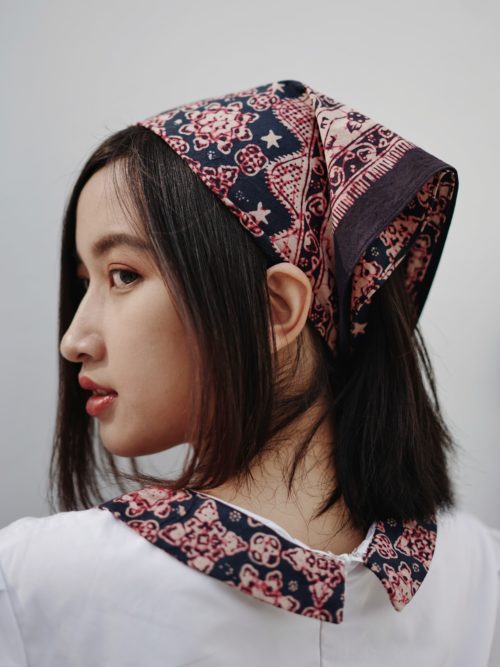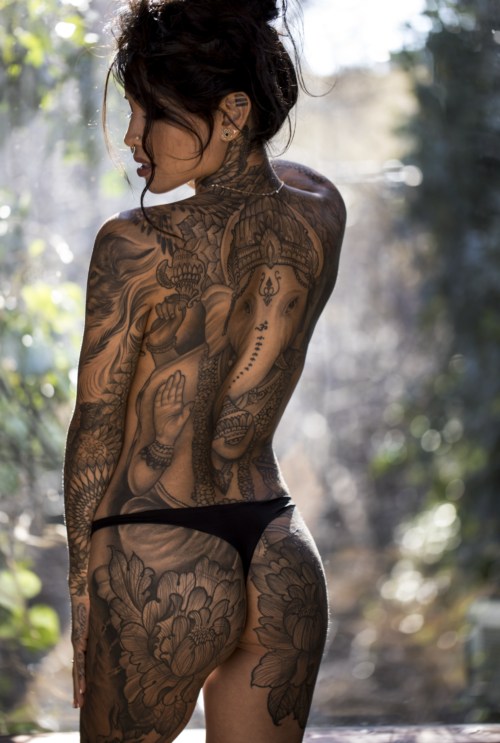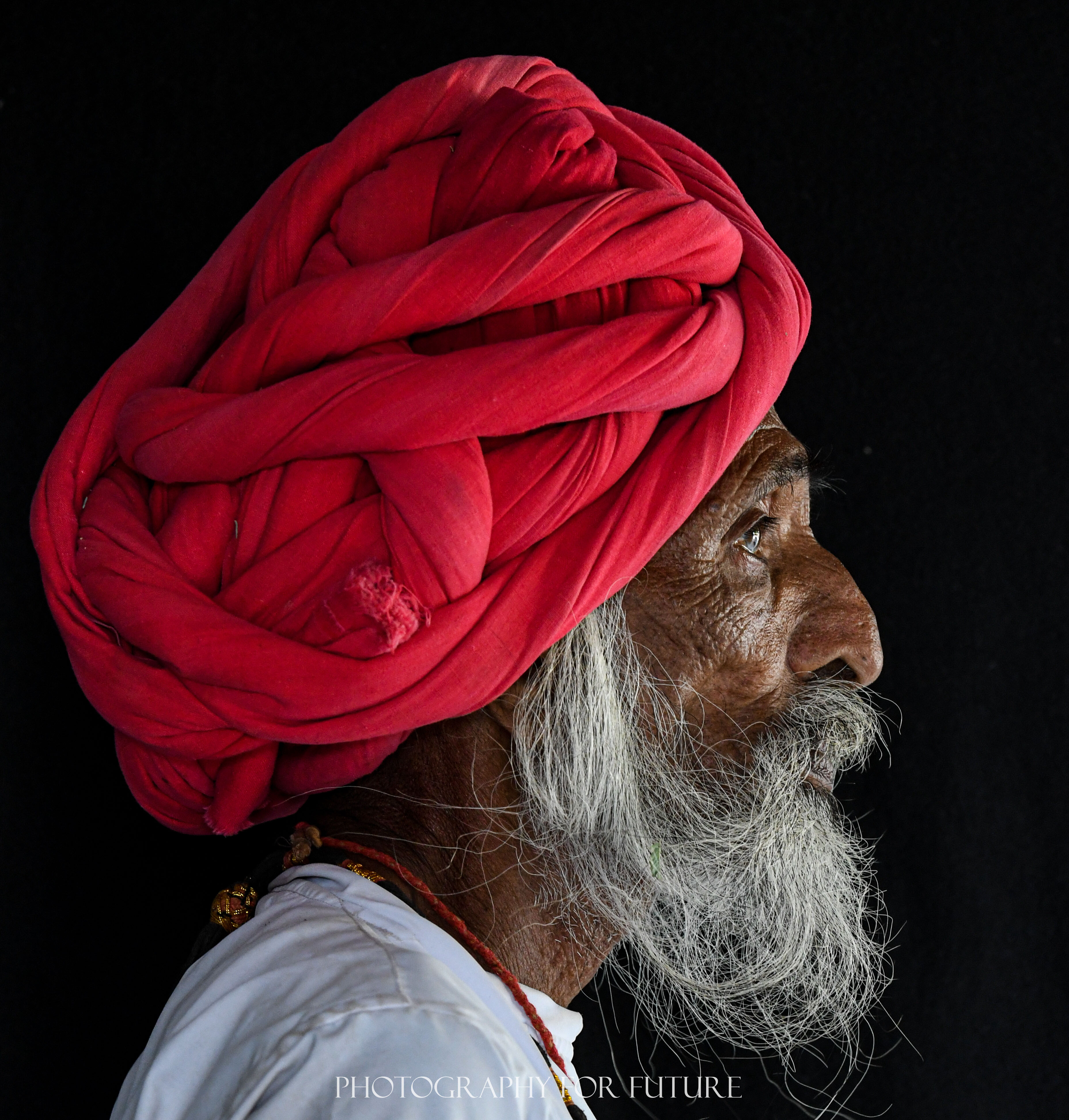By: Stephanie Valentia
Indonesian Batik was inscribed in the year 2009 on the UNESCO Representative List of the Intangible Cultural Heritage (ICH) for Humanity and gives pride for Indonesians with great meaning passed down from generation to generation. The uniqueness of batik itself is found in the patterns and colors of every fabric. There are different meanings and philosophies behind every pattern and color of batik depending on its origin. This was one of the reasons why batik is very popular even in foreign countries.
Batik Jambi has a beautiful composition and colors with the unique philosophy behind the cloth. The batik has a different meaning for each pattern by using traditional ornaments, flora-fauna, and myths of the Jambi Malay Kingdom.
My team is Michella Setiabudi, Eusebeia Thea and I are the fashion students of Universitas Ciputra Surabaya, Indonesia in collaboration with Rumah Batik Azmiah (the house of Batik Jambi Azmiah). We have made a capsule collection based on three-pillar of sustainability in the fashion industry. This was our project at Fashion and Sustainability course, guided by our lecturer Janet Teowarang. As for our project, the three-pillar of sustainability include:
Environment
With the feminine classic concept, the design that we made holds on to the elements of slow fashion with a timeless style. This makes the products more sustainable because it doesn’t just follow certain trends and can be worn all the time. With the combination of contemporary feminine timeless style and batik from the house of batik Azmiah, we want the Indonesian young generation to get to know the cultural sustainability through the richness of our culture.
Social
We made a campaign with a theme of Our Culture, Our Traditions, Our Language, and #fromgenerationtogeneration slogan to introduce the heritage of batik Jambi to the community from the products of our capsule collection.
Economy
Modern lifestyle and the influence of foreign culture on Indonesia caused the young generation of Indonesia to start to overlook the richness of the traditional culture of Indonesia. With the combination of contemporary design and batik Jambi, we want to raise awareness for the people by starting to wear batik from Jambi to empower the sustainability of the batik Jambi artisans.
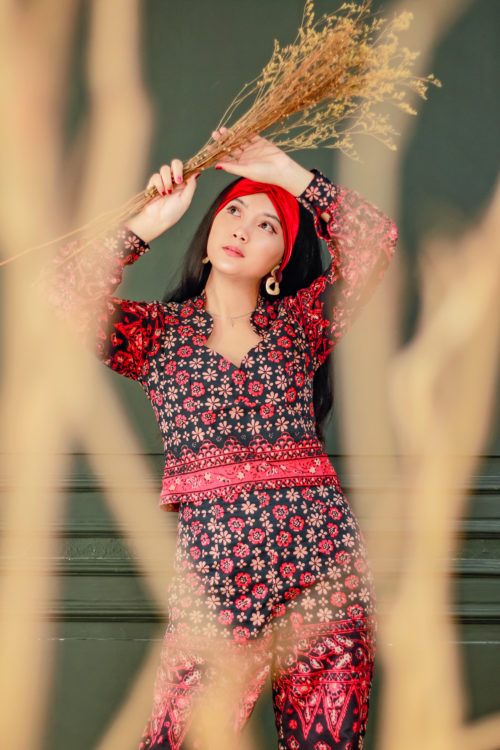
Inspired by the authenticity of batik Jambi, we choose a feminine timeless style and combined it with contemporary designs so that it looks urban and fashionable but still has that classic and elegant look. On the capsule collection, we were used Melati Bengkal pattern in which symbolized elegance and manners, and Kaco Piring pattern’s meaning strong determination with an open and clean heart in every work and intention.
The designs were carefully made so that they can be mixed and matched easily and practically. They want all men and women able to wear batik daily, especially for young adults, and teens are rarely wearing batik because of the impression that batik can only be worn for formal occasions. We also want to maintain the appreciation of batik to young generations so that it doesn’t go extinct. We added a simple and practical bandana as accessories and the modern version of head covering from Jambi that is tengkuluk.
House of batik Azmiah is one of the batik Jambi houses located in Jambi, Central Sumatra, Indonesia. This batik house was established in the 1970s and then developed by the next generation on July 20, 1985. House of batik Azmiah is currently managed by the third generation, Bagus Pribagus and his sister Dhita Khairunnisa. He actively participates in local to national events to introduce batik Jambi to the public. House of batik Azmiah has its trademark with red colors and the batik usually using the old patterns, the batik cloth is handmade and use high-quality material. This is why the batik looks very authentic and unique. The process of making batik takes around 1 to 2 and a half months depending on the complexity of the pattern and the fabric.
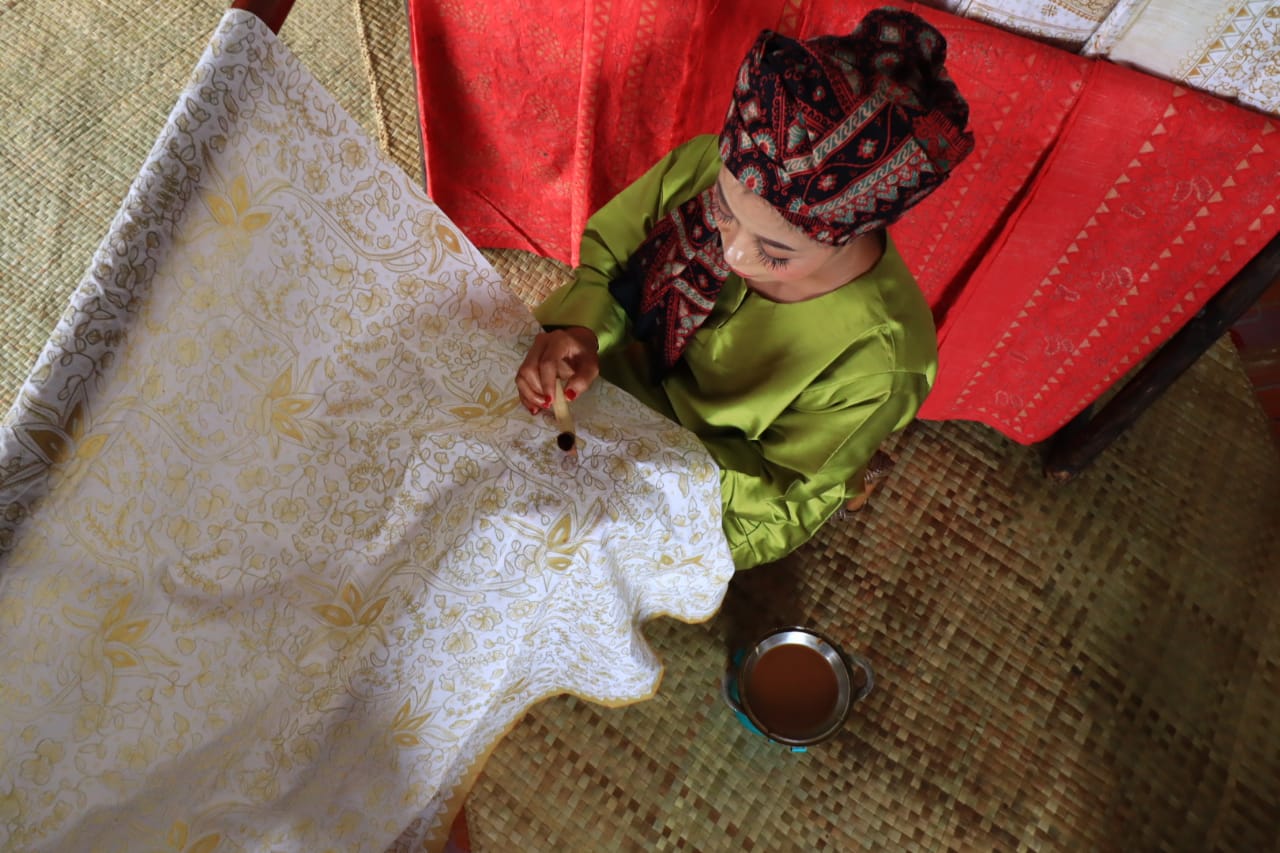
Haji Muhibat introduced batik to Jambi and taught the local people how to make batik in 1875 A.D. when he and his family were moved from Central Java to stay in Jambi. Previously, the nobles and the King of Malay Jambi usually wore batik at the time as traditional clothing. The Sultan’s family-owned batik was in the colors of red, yellowish, and navy. However, as the Sultan’s power diminished, so did the demand for red batik, and the Jambi batik business stopped for a while in the year 1920.
Batik Jambi evolved from Javanese pesisir batik such Lasem, Cirebon, Indramayu, and Pekalongan. Batik was first introduced in Sumatra as a gift from the Kings of Java to the Sumatran nobility. As a result of this trading relationship between the two islands, batik became well known in Sumatera, where it was in high demand by the locals. However, demand for batik Jambi fell dramatically during the Dutch-Japanese colonial period and the Republic of Indonesia’s early independence.
Currently, the majority of Jambi batik artisans are housewives who do batik work in their spare time after finishing their household chores. Their work was then sold to Jambi collectors or batik shops. Batik Jambi is frequently used for several traditional events such as weddings, hair cutting rituals (which are performed when a baby reaches the age of 40 days), circumcision, and burial.
Jambi women also wear tengkuluk and tudung lingkup as head coverings, which have different philosophies and meanings. Tengkuluk or kuluk is a type of cloth that is commonly used for daily activities such as housework and traditional ceremonies. Tengkuluk Jambi is distinguished by the manner in how it is worn, which doesn’t require the use of pins or needles to keep it in place but rather on the ability to bind and wrap the cloth. The way and style to wear tengkuluk have varied meanings where if the strand piece of remaining cloth is placed on the left, the wearer is single. If the strand piece of remaining cloth is placed on the right, the woman who wears it is married.
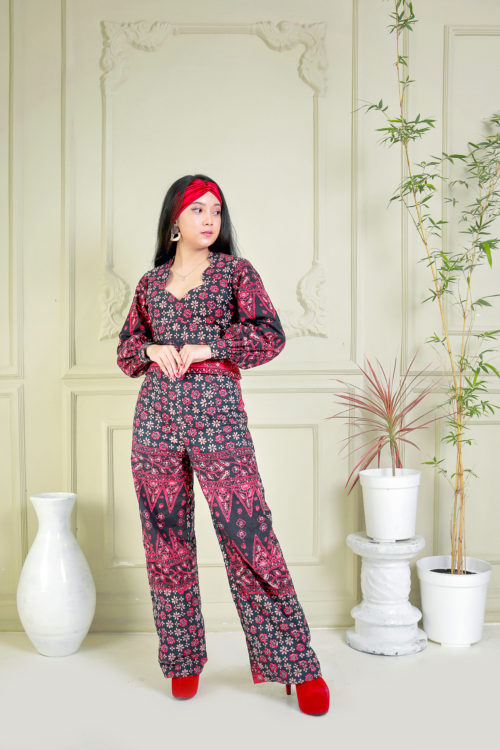
While tudung lingkup serves as a veil to cover the women’s hair to the chest when going out of the house, it also provides sun protection. The use of tudung lingkup indirectly indicates a woman’s age and marital status. Although a woman wearing tudung lingkup is uncommon in Jambi today, the tradition existed and was practiced by the Jambi people’s ancestors in the past. Because the primary function of tudung lingkup is to serve as a veil to cover the head and face, sarong and long cloth are commonly used fabrics. Instead of tengkuluk, which emphasizes the beauty of cloth wrapping, tudung lingkup is more simple and practical and commonly used for non-formal daily activities outside the house.
During the reign of the Jambi Malay Kingdom, Jambi’s port became a hub for the exchange of goods from all over Indonesia. This resulted in Jambi’s culture being acculturated with foreign cultures such as China, India, Persia, Arabia, Europe, and other Indonesian cultures. Jambi decorative patterns, which are rich in elements of local cultures, blend harmoniously with touches of other cultures that have lasted for centuries. In addition to decorative patterns according to the environments in which they live.
According to Ja’far Rassuh, a Jambi cultural observer, the decorative patterns of Jambi batik as a whole are representative of nature and characteristic of the Jambi people, which are simple, egalitarian, open to things from outside, but cautious in responding to changes. The name of the pattern is usually taken from the most dominant pattern on the batik piece or the repetition of a large pattern that has served as the main focus, whereas the addition of small size lines or dots that fill the empty spaces on the main decorative pattern is referred as the supporting decorative pattern.
Along with the rising market demand, many fabric innovations are being developed with a variety of decorative patterns. Because there is no single dominant decorative pattern on this, the composition tends to emphasize the aspect of beauty. Typically, a decorative pattern is named after its creators such as Tampuk Manggis, Potong Intan, Kuwau Berias, and many others for approximately about 39 patterns.

